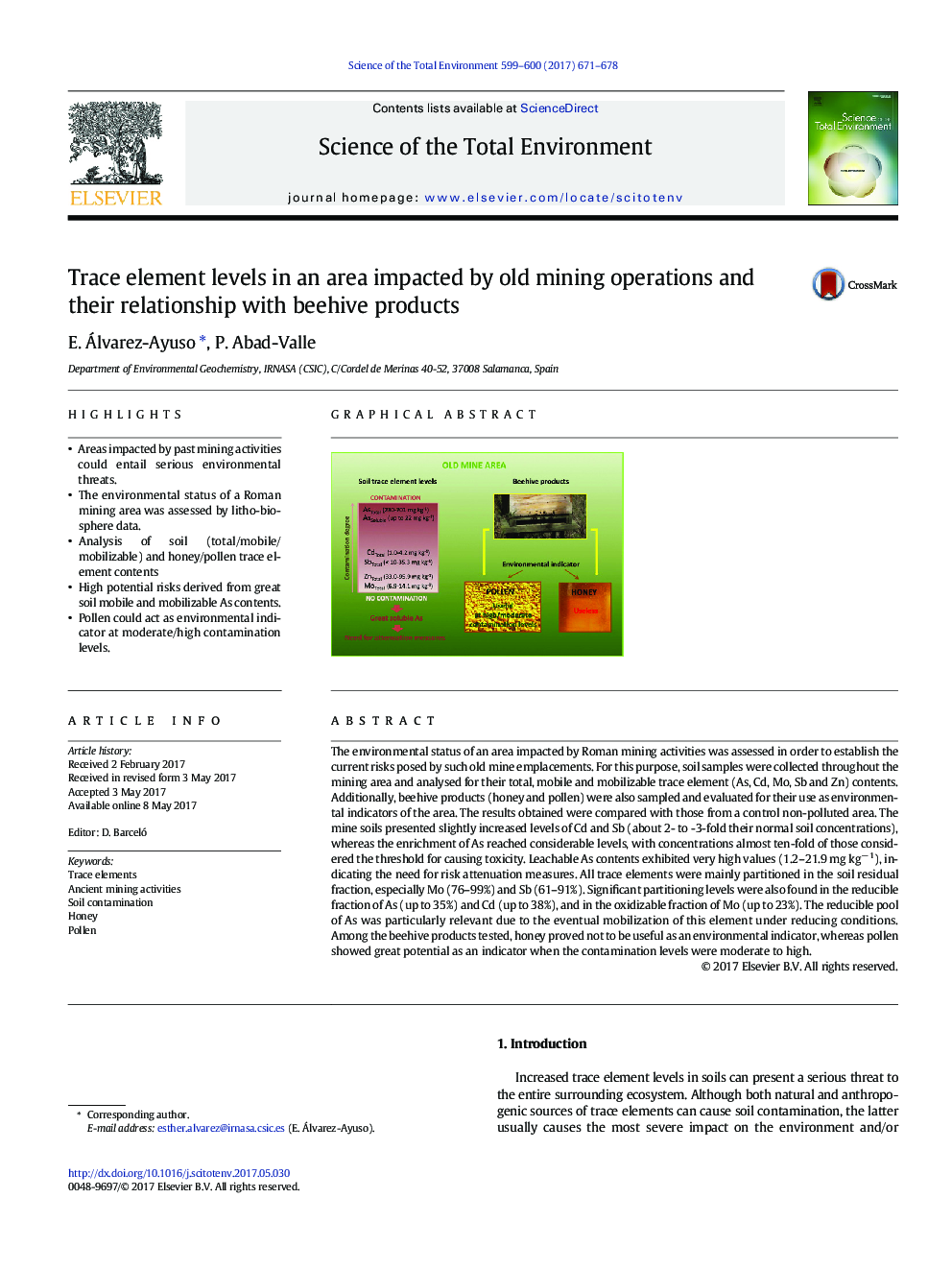| کد مقاله | کد نشریه | سال انتشار | مقاله انگلیسی | نسخه تمام متن |
|---|---|---|---|---|
| 5750531 | 1619698 | 2017 | 8 صفحه PDF | دانلود رایگان |
- Areas impacted by past mining activities could entail serious environmental threats.
- The environmental status of a Roman mining area was assessed by litho-biosphere data.
- Analysis of soil (total/mobile/mobilizable) and honey/pollen trace element contents
- High potential risks derived from great soil mobile and mobilizable As contents.
- Pollen could act as environmental indicator at moderate/high contamination levels.
The environmental status of an area impacted by Roman mining activities was assessed in order to establish the current risks posed by such old mine emplacements. For this purpose, soil samples were collected throughout the mining area and analysed for their total, mobile and mobilizable trace element (As, Cd, Mo, Sb and Zn) contents. Additionally, beehive products (honey and pollen) were also sampled and evaluated for their use as environmental indicators of the area. The results obtained were compared with those from a control non-polluted area. The mine soils presented slightly increased levels of Cd and Sb (about 2- to -3-fold their normal soil concentrations), whereas the enrichment of As reached considerable levels, with concentrations almost ten-fold of those considered the threshold for causing toxicity. Leachable As contents exhibited very high values (1.2-21.9 mg kgâ 1), indicating the need for risk attenuation measures. All trace elements were mainly partitioned in the soil residual fraction, especially Mo (76-99%) and Sb (61-91%). Significant partitioning levels were also found in the reducible fraction of As (up to 35%) and Cd (up to 38%), and in the oxidizable fraction of Mo (up to 23%). The reducible pool of As was particularly relevant due to the eventual mobilization of this element under reducing conditions. Among the beehive products tested, honey proved not to be useful as an environmental indicator, whereas pollen showed great potential as an indicator when the contamination levels were moderate to high.
246
Journal: Science of The Total Environment - Volumes 599â600, 1 December 2017, Pages 671-678
